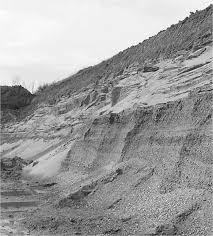WGCg Geological Site List Quarry Site 10 20: A Complete Guide

Introduction
Exploring geological sites can feel like stepping into a living history book. The WGCg geological site list quarry site 10 20 is one of the most fascinating destinations for rock enthusiasts, students, and curious travelers. These quarry sites not only showcase natural beauty but also offer insights into the Earth’s history, mineral formations, and environmental changes over millions of years. Whether you are an aspiring geologist or just someone who loves nature, understanding what makes quarry site 10 20 unique will help you appreciate its scientific and aesthetic value.
In this article, we will cover everything from the history and location of quarry site 10 20 to its geological significance, popular rocks, and visitor tips. By the end, you will have a comprehensive understanding of this site and how it fits into the broader WGCg geological site list.
What Is the WGCg Geological Site List?
The WGCg geological site list is a catalog of important geological locations maintained to protect and promote Earth’s natural heritage. Each site in this list is selected based on its scientific importance, mineral diversity, or unique rock formations. Quarry site 10 20 is particularly notable because it contains rare rock types and visible geological layers that tell a story of millions of years of natural processes.
Being on the WGCg list also means the site is monitored for conservation. This ensures visitors can safely explore and learn without harming the environment. Educational tours, field research, and even amateur rock-hunting activities are often allowed under careful supervision.
Location and Accessibility of Quarry Site 10 20
Quarry site 10 20 is strategically located in a region known for its rich mineral deposits. The site is easily accessible via local roads and has basic facilities for visitors, including parking, walking trails, and information boards. Seasonal weather affects accessibility, so checking local conditions before visiting is essential.
The site’s surroundings include small hills, streams, and vegetation that add to its natural charm. For students and amateur geologists, the area around quarry site 10 20 offers opportunities to study soil layers, erosion patterns, and mineral deposits outside the main quarry.
Geological Features of Quarry Site 10 20
Quarry site 10 20 is a treasure trove for anyone interested in rocks and minerals. The quarry exposes layers of sedimentary rock, granite veins, and occasionally fossilized remains. These layers help scientists study how Earth’s crust changed over time.
Visitors often notice large boulders, unique textures, and colors in the rocks. Some rocks are soft and crumbly, while others are hard and dense, showing the variety of geological processes that shaped this area. The site is also important for understanding local mineralogy and potential natural resources.
Common Rocks and Minerals Found
At quarry site 10 20, you can find several types of rocks and minerals:
- Granite: Hard, speckled rocks often used in construction.
- Sandstone: Layers that show ancient riverbeds and erosion patterns.
- Limestone: Often containing fossils, showing marine life from ancient times.
- Quartz and Feldspar: Crystals embedded in rock veins, adding sparkle to the formations.
These rocks provide clues about the Earth’s geological history, such as volcanic activity, sedimentation, and fossilization. Collecting samples for personal study may be restricted, so always follow local regulations.
Historical Significance of the Site
Quarry site 10 20 isn’t just about rocks it has historical value too. Mining activity in the region dates back centuries, and the quarry has contributed to local construction and trade. Ancient tools and mining remnants found around the site give a glimpse of early geological exploration.
Additionally, the quarry has played a role in educational research. Universities and geological societies often organize field trips here to study sedimentary structures, mineral content, and erosion processes.
Environmental Importance
Protecting quarry sites like 10 20 is crucial for preserving ecosystems. The site supports local flora and fauna, including rare plants that grow in rocky soil. Water runoff from the quarry creates microhabitats for insects, amphibians, and birds.
By maintaining the site under WGCg supervision, authorities ensure that both educational and recreational activities coexist with nature conservation. Visitors are encouraged to respect the environment by staying on marked trails and avoiding rock removal.
Educational Value for Students and Researchers
Quarry site 10 20 serves as a natural classroom. Students can observe geological formations, identify minerals, and learn about erosion and deposition. Teachers and researchers use the site to demonstrate:
- Stratification and sediment layers
- Fossil identification and paleontology
- Rock formation processes
- Environmental and ecological interactions
Hands-on experience at a quarry site reinforces theoretical knowledge, making learning more engaging and memorable.
Visiting Tips for Quarry Site 10 20
If you plan to visit, here are some helpful tips:
- Wear sturdy shoes, as the terrain can be uneven.
- Bring water, sun protection, and a hat.
- Respect safety signs and restricted areas.
- Carry a notebook or camera to document interesting rock formations.
- Visit during daylight for better visibility and safety.
- Check for guided tours for a more informative experience.
These simple tips ensure a safe and enjoyable visit while maximizing learning opportunities.
Safety Measures at Quarry Sites
Quarries can be dangerous if safety rules are ignored. At quarry site 10 20, authorities have installed fences, warning signs, and designated walking paths. Visitors should:
- Avoid climbing on unstable rock faces
- Not disturb wildlife
- Keep children and pets close
- Follow guidance from site staff
By adhering to these precautions, visitors can enjoy the beauty and educational value of the quarry without risks.
Conservation Efforts and Future Plans
Ongoing conservation ensures that quarry site 10 20 remains a valuable educational and scientific resource. Plans include:
- Regular monitoring of rock stability
- Erosion control measures
- Educational signage and guided tours
- Collaborative research programs with universities
These efforts help maintain the balance between accessibility for visitors and protection of the natural environment.
FAQs About Quarry Site 10 20
1. Can I collect rocks from quarry site 10 20?
Collecting rocks may be restricted. Check local rules before taking samples.
2. Is the site suitable for children?
Yes, with supervision and adherence to safety guidelines.
3. What is the best season to visit?
Spring and autumn offer mild weather and safer terrain.
4. Are guided tours available?
Yes, local authorities often provide guided tours for educational purposes.
5. How long should I plan to stay?
A 2–3 hour visit is sufficient for exploration and photography.
6. Are there nearby accommodations?
Several hotels and guesthouses are available within a short drive from the site.
Conclusion: Why Visit WGCg Quarry Site 10 20
Visiting the WGCg geological site list quarry site 10 20 offers more than just beautiful rocks. It provides a chance to connect with Earth’s history, learn geology hands-on, and appreciate the natural world. The combination of scientific importance, educational value, and natural beauty makes it a must-visit destination.
Whether you’re a student, researcher, or nature enthusiast, quarry site 10 20 promises an engaging and educational experience. Respect the environment, follow safety measures, and immerse yourself in the fascinating story written in stone.



